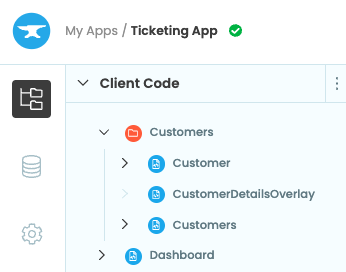Hi everyone,
I am pleased to announce an early Christmas present from us – we’ve made it much easier to organsie large Anvil apps!
With a new tree-based structure, your forms and modules can now be arranged into hierarchical packages:

You can find out all the detail in the docs:
Anvil Docs | Structuring Your App
And for the apps you already have, we’ve got a guide to help you migrate!
How-To Guides | Converting an app to use packages
(This is a versioned upgrade. So if you’ve published a version of your app, upgrading the dev version won’t change anything about your published app!)
But wait, there’s more…
I am also pleased to say that our Python-to-Javascript compiler now supports Python 3 syntax for client-side code – which means, yes, that F-strings are on the menu in your Form code!
What are F-strings? They’re a cool feature of Python 3 that lets you build strings in code. Instead of writing:
self.label_1.text = "Hello, " + your_name + "!"you can write:
self.label_1.text = f"Hello, {your_name}!"Much more pleasant, right?
We’ve supported Python 3 on the server for a long time, of course. But now you can use it throughout your app – and we’ve made it the default for all new apps.
If you have an existing app you want to upgrade, we’ve got you covered:
How-To Guides | Switching apps to client-side Python 3
(And yes, the switch is reversible – you can switch back and forth between Python 3 and 2, on the client as well as the server. And it’s per-version - so if you publish a version of your app, upgrading the dev version won’t break anything.)
A big thanks to everyone on the team who made this happen, and to the stalwart beta testers who helped us refine the design!
Have a merry (and Pythonic) Christmas ![]()



